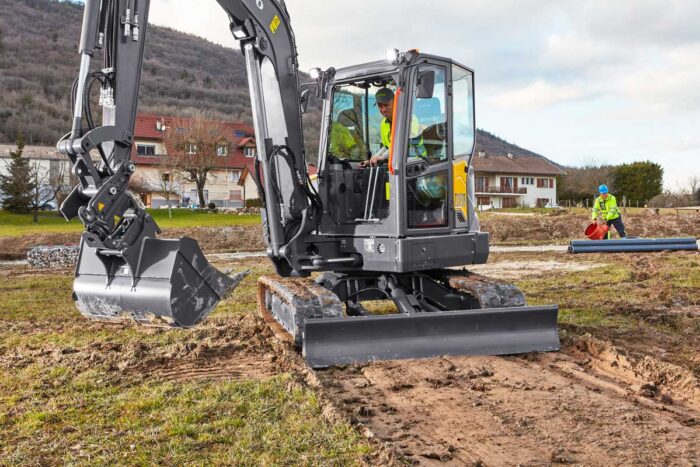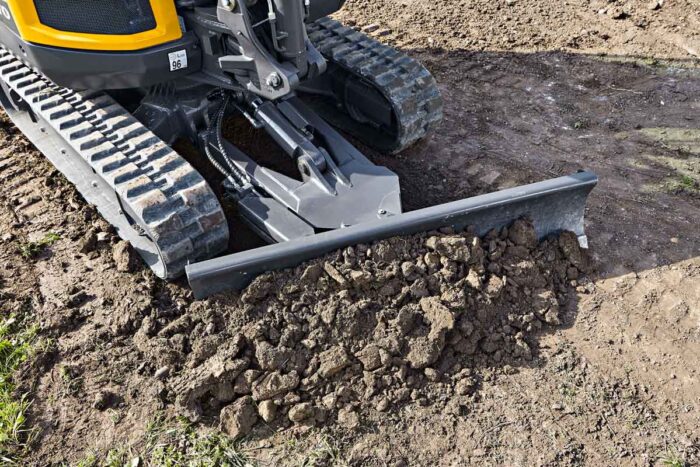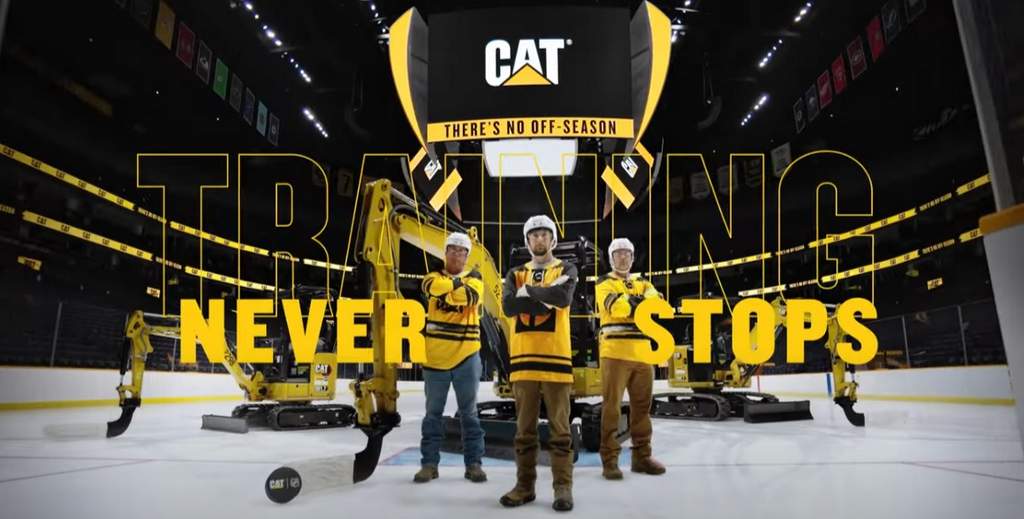Blade Benefits: Maximize Versatility with the Right Mini Excavator Dozer Blade

Mini excavators are popular because of their versatility, most of which is attributed to the wide variety of attachments they can handle. But an overlooked feature that also supports adaptability is a dozer blade.
Many people think of this blade as something that provides extra stability for a light machine and occasionally moves a bit of dirt around. But there are multiple dozer blade options, and using the right one can make a compact excavator even more efficient and productive than it already is.
Let’s take a look at the three primary types of dozer blades, their respective advantages and other options to consider when looking for your next compact excavator.
Standard
A standard dozer blade may also be called a straight blade or an S-blade. It has a flat, straight edge. In addition to providing stability, it can be used for general grading tasks like stripping topsoil and shaping hard-packed surfaces. This blade is sturdy and does a nice job absorbing shock. Typically, it only moves up and down. Because the straight blade does not have side wings (hence the nickname), it’s not the best option for handling looser material that you don’t want to push out to the sides.
Angle
Just like it sounds, an angle dozer blade can be hydraulically angled to the left or right from its pivot point, allowing the operator to push material to one side rather than straight ahead. This option is good for tasks like side-casting (moving material out of the way), backfilling trenches, shaping slopes, clearing land and leveling uneven surfaces.
Floating
The floating dozer blade feature is more about the functionality than the blade itself. In fact, depending on the manufacturer, it may be an option for more than one type of blade. Typically, this mode is activated from the machine controls. The blade then automatically positions itself to “float” just above the surface and follows the contours of the ground. This makes it ideal for back dragging and fine grading tasks.
These three blades are commonly found on a range of sizes. For example, all Volvo compact excavators come with a standard blade. The 3.7-ton EC37 through the 6-ton EC60 have an optional angle blade, and the EC37 through the 8.8-ton EC88 have an optional floating blade.
Other Considerations

For added versatility and precision, there is also a six-way dozer blade that can move up and down, tilt left and right and angle left and right. A strong pivot point and hydraulic tilting make this blade ideal for more exact contouring and shaping. Six-way blades have some additional maintenance considerations, though. You’ll need to keep an eye on its greaseable pins and bushings as well as hose springs that prevent the hydraulic hoses from being pinched.
The machine’s controls also come into play when evaluating dozer blades. Some mini excavator manufacturers make dozer blades even more intuitive with a dedicated joystick. This ergonomic control may include preset functions like “blade float” and “blade angle.” That way the operator can automate these movements, making their work even easier.
To determine which excavator dozer blade and functions are right for you, consider the size and scale of jobs you plan to tackle and how quickly you need to work. Your dealer and the excavator’s OEM should have the expertise to help you choose.
Dozer blades offer stability and support in digging applications. Just don’t overlook the benefits they can provide in site prep, backfilling and grading, adding to your machine’s versatility and your operator’s productivity.
Darren Ashton is a product manager for compact equipment at Volvo Construction Equipment.
Mini excavators are making big waves on jobsites all over North America. Click here for the latest news on these machines and the companies that make them.




